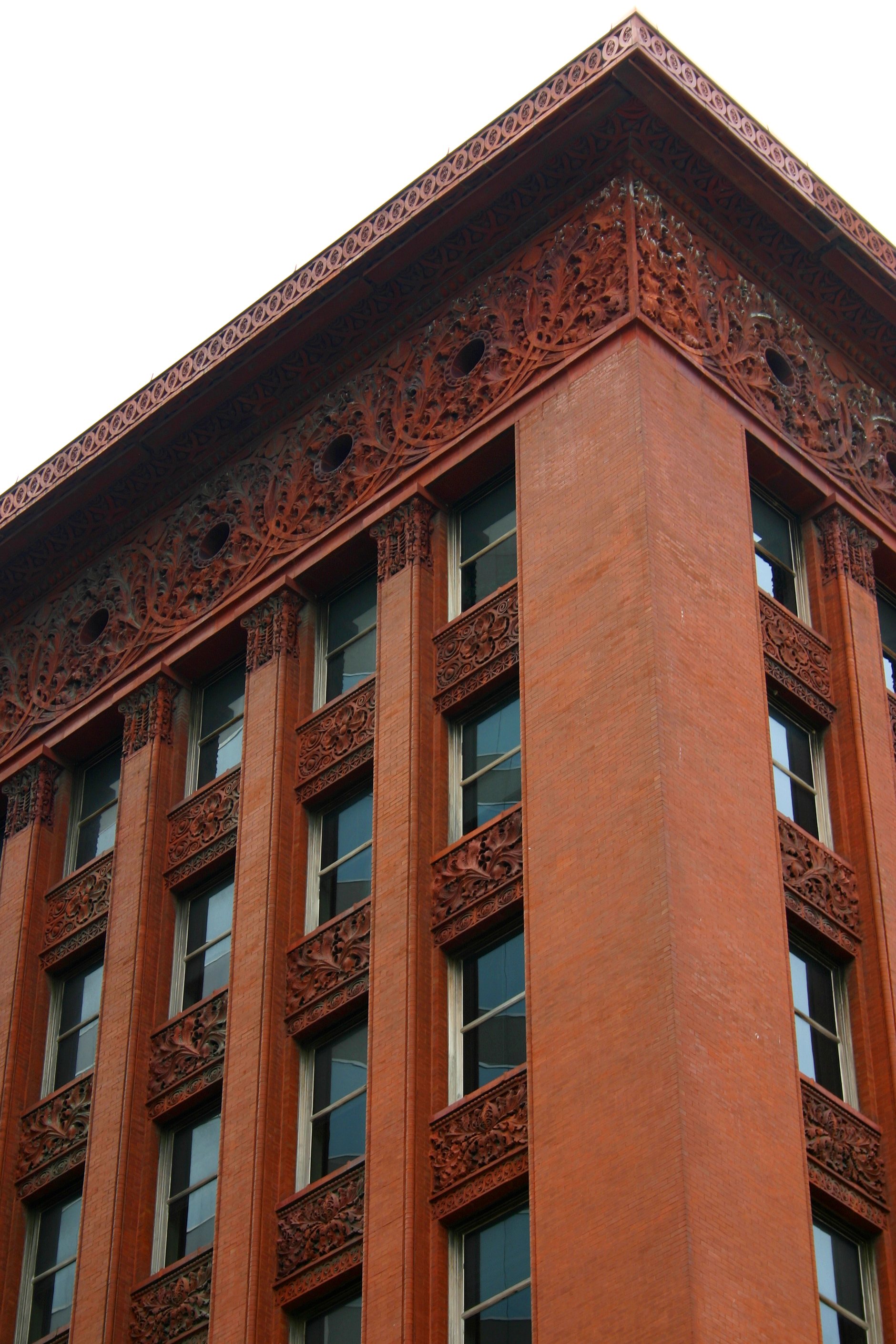Louis Sullivan
 Louis Sullivan is a pillar in the history of architecture, and every student learns his name and takes a tour of his amazing breadth of architectural achievements. While one could refer to him as either the father of skyscrapers or the father of modernism, both would be correct. From his personal homes, to his banks to his skyscrapers, Sullivan forged a modern way of looking at design when western culture was drown in stylistic eclecticism.
Louis Sullivan is a pillar in the history of architecture, and every student learns his name and takes a tour of his amazing breadth of architectural achievements. While one could refer to him as either the father of skyscrapers or the father of modernism, both would be correct. From his personal homes, to his banks to his skyscrapers, Sullivan forged a modern way of looking at design when western culture was drown in stylistic eclecticism.
I’ve appreciated Sullivan’s work like I appreciated the paintings of the impressionist masters like Monet, Degas or Renoir who, to many a contemporary eye, produced works that feel more classical than revolutionary, because while they were breaking the academic rules of their art, they did it with seductively new techniques, and in a way that enhanced the experience. Sullivan’s architect does a very similar thing. With his skyscrapers, for instance, he respected the tripartite arrangement of “base-shaft-capital” fundamental to classical design, but applied it in to the typology in ways that enhanced the experience and allowed his architecture to evolve. Gothic flying buttresses make sense on a cathedral, they do not make sense atop a skyscraper. The brain reads patterns and appreciates being able to able to draw on know morphologies with new experiences, and Sullivan understood this. The rusticated bases of his skyscrapers gave a firm sense of grounding, the intermediate floors drew the eye up the height of the building, and the appropriately sized capital gave proper visual termination. These buildings felt new, were new, but manifest with an architectural coherency that belied their revolutionary reality.
 Stylistically, I was also enamored with Sullivan’s ability to conceive beautifully elaborate detail work, often inspired by natural forms, erupting from his pencil in brilliant sketches. These sketches would then be translated into iron and stone, but would not simply be used as decoration. I’ve felt that detailing, for him, always had a purpose. That purpose may be to create a sense of entry or to emphasize an arrangement, but was never simply decoration for decoration’s sake.
Stylistically, I was also enamored with Sullivan’s ability to conceive beautifully elaborate detail work, often inspired by natural forms, erupting from his pencil in brilliant sketches. These sketches would then be translated into iron and stone, but would not simply be used as decoration. I’ve felt that detailing, for him, always had a purpose. That purpose may be to create a sense of entry or to emphasize an arrangement, but was never simply decoration for decoration’s sake.
I’ve always found this subtle manipulation of the rules fascinating. It’s easy to simply disavow any relationship to what had come before and force new forms to ‘be’, especially in this age of nearly infinite structural options. I believe that the designs we truly enjoy are not simply sculptural monoliths, but there is reason behind the design, hence the infamous statement of Sullivan’s “form ever follows function”. It is not the form that becomes engaging then, but the thought behind it.






